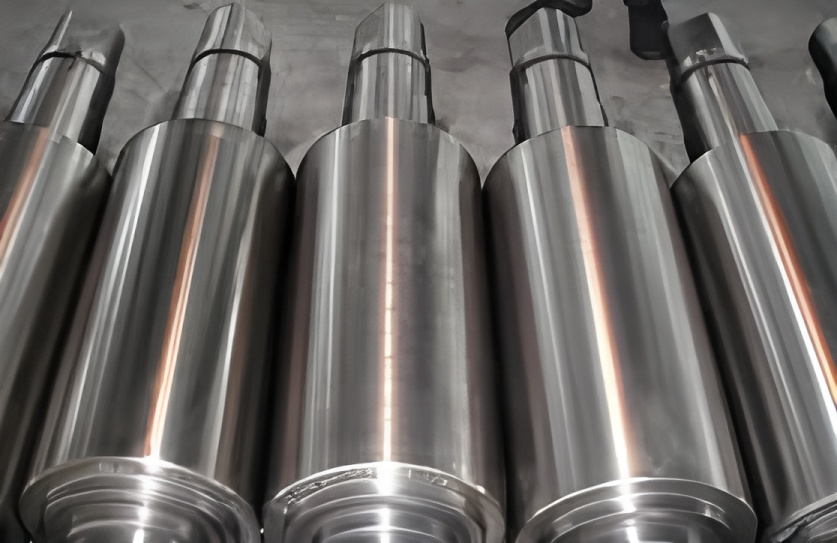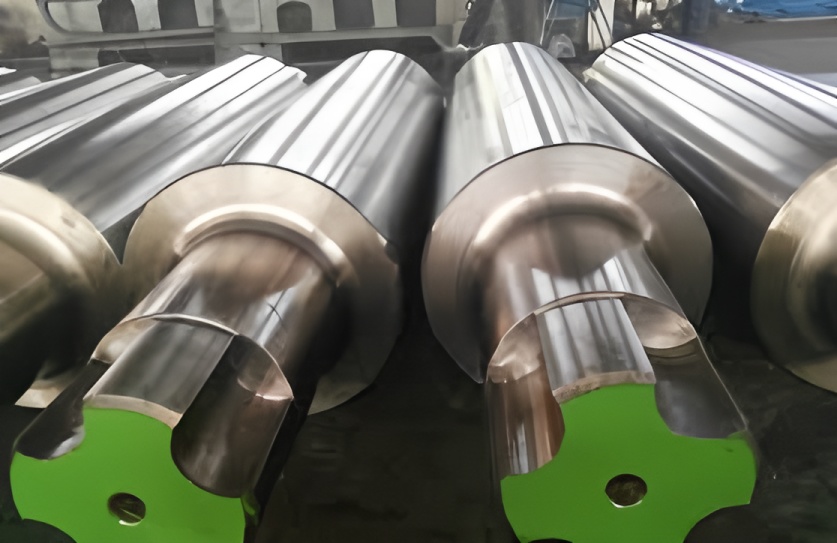Description: This article analyzes the causes of various issues such as piled-up steel during rolling and malfunctions of the laying head, providing actionable insights for operational reference.
Keywords: Steel rolling process
In the finishing rolling unit, process adjustments should generally only be made at the first and final stands. Adjusting other stands arbitrarily is discouraged for two main reasons:
Moving the roll gap of any stand disrupts the micro-tension relationship between stands, leading to fluctuations in product dimensions.
Guide roll openings are precisely set based on sample bars. Enlarging a roll gap increases incoming material size, reducing guide roll service life and potentially damaging guide wheels—resulting in scrap. Reducing a roll gap causes instability in guide wheels and may lead to steel reversal.
For adjusting the height and width of the finished product, modify the first stand first, then the final stand. The cumulative adjustment across these stands should not exceed 0.3 mm.
If the billet surface quality is poor, stop and check for foreign material in the roll rings and guides.
Roll Gap Adjustment Guidelines:
If the vertical diameter is too large and the horizontal diameter slightly small: reduce the roll gap at the final stand.
If the vertical diameter is too small and the horizontal diameter correct: enlarge the roll gap at the final stand.
If the vertical diameter is correct and the horizontal diameter too large: reduce the roll gap at the first stand.
If the vertical diameter is correct and the horizontal diameter too small: enlarge the roll gap at the first stand.
If issues persist after these adjustments, check the incoming material size from the previous unit and adjust the roll gap at its final stand. The cumulative adjustment between the first and last stands of the finishing mill should not exceed 0.3 mm.
Causes of Piled-Up Steel During Rolling:
Head Stacking:
Oversized material from the previous pass squeezes into the entrance guide, causing blockage.
Non-uniform deformation of the billet head due to low temperature or inclusions.
Severe wear or seized bearings in the torsion guide, altering the torsion angle.
Bending of the rolled piece preventing entry into the next pass.
Tail Stacking:
Billet defects (e.g., delamination, severe bubbles) causing breakage during rolling.
Improper speed setting in intermediate mills, disrupting tension and causing stacking.
Sudden speed changes of a mill motor breaking the continuous rolling relationship.
Roll breakage or severe guide damage altering the cross-section.
Inter-Stand Stacking in Finishing Mill:
Guides or guards adhering to steel.
Guide wheels not rotating or burned-out bearings.
Poor condition of the rolled piece head.
Incorrect installation of guides/guards or roll rings.
Improper roll gap or incompatible incoming size.
Loose guides.
Broken keys in pressure rollers loosening sheets.
Damaged roller pieces.
Worn or broken roll shaft bushings.
Causes of Waste Bin Stacking:
During 5 Rotations:
Poor entry guide condition at Stand 28: misaligned, oversized, adhered iron, or non-rotating guide roller.
Misalignment between Stand 28 exit guide and waste bin; incorrect base positioning.
Excessive wear or iron adhesion in Stand 28 exit guide or waste bin.
During 5–12 Rotations:
Incorrect installation or excessive wear in water cooling section.
Foreign objects in water cooling section.
Malfunctioning cooling water, backwash water, or air nozzles (stuck open or premature activation).
Around 12 Rotations:
Misaligned guide in pinch roller section.
Excessive wear in bell mouth core tube of laying head.
Pinch roller stuck in normally closed state.
End-of-Wire Rod Stacking in Waste Bin:
Incorrect speed coordination among finishing mill, pinch roller, and laying head.
Improper pinch roller opening setting.
Incorrect parameters during full clamping (e.g., cylinder pressure, roll diameter, current limit).
Poor steel quality (e.g., “rotten steel”).
Judge stacking position based on rotation count and inspect impact points and causes prior to that position.
Countermeasures Against Waste Bin Stacking:
Realign the turning guide groove of the waste bin with the rolling line during initial installation.
Replace worn pins in the turning guide groove with screws if vertical movement exceeds 0.5–0.6 mm.
Increase the weight of the waste bin cover to balance ease of opening and protection.
Modify the rear guide of the pinch roller to increase its inclination and prevent impacts on the laying head inlet.
Replace misaligned guides/guard fixtures in the pinch roller section.
Set usage standards for water cooling section guides: max wear diameter ≤24 mm (≤19 mm for small sizes), center deviation ≤2 mm, guide pipe swing ≤2 mm.
Maintenance Responsibilities:
Production Preparation: Check major rolling line monthly; inspect minor issues during daily maintenance. Ensure guide and nozzle activity.
Steel Rolling Workshop: Check for steel heads, slag, and nozzle functionality. Center guides after stacking; resolve nozzle pipe vibration with Production Preparation.
Red Billet Quality and Impact:
Overly large incoming material squeezes into guides, causing stacking. Observe traces for diagnosis.
Non-uniform deformation, low head temperature, or inclusions cause splitting and stacking.
Undersized incoming material creates excessive gap, leading to falling and blocking.
Misalignment between guide centerline and pass shape, uneven roll wear, or excessive transmission gap cause bending and stacking.
Improper red billet size may break or chip roll rings.
Oversized incoming material causes overfilling and ear formation, leading to folding.
Undersized incoming material causes swinging and irregular ears, resulting in folding.
Roughing/intermediate units utilize high temperature to enhance elongation.
Pre-finishing units leverage good surface quality and small tolerance to meet finishing mill input requirements.
Proper material shape in each finishing stand ensures stable micro-tension rolling.
Red billet temperature affects deformation resistance and motor load.
Low temperature increases mill bounce and metal flow issues, causing minor stacking.
Low head temperature increases width and stacking.
High temperature makes steel too soft, causing stacking in finishing mill; severe oxidation leads to scale blockage.
Uneven temperature causes tension fluctuations and finished product inaccuracies.

Laying Head Issues: Spiral Shaking, Variable Sizes, Non-Round Shapes:
Left-Right Shaking: Adjust the speed advance of laying head and pinch roller to ensure smooth, even coil dropping.
Variable Sizes:
Wear in laying tube disrupts dynamic balance; improve wear resistance, reduce speed.
Improper installation, high-temperature deformation, or displacement require strict installation.
Check wear in laying tube, pinch roller outlet, guide grooves, and cooling pipes; adjust promptly.
Automation or tension control issues require corrective measures.
Non-Round Shapes:
Replace worn or unbalanced laying tubes; perform dynamic balance tests for new tubes.
Regularly inspect and conduct balance tests during installation.


